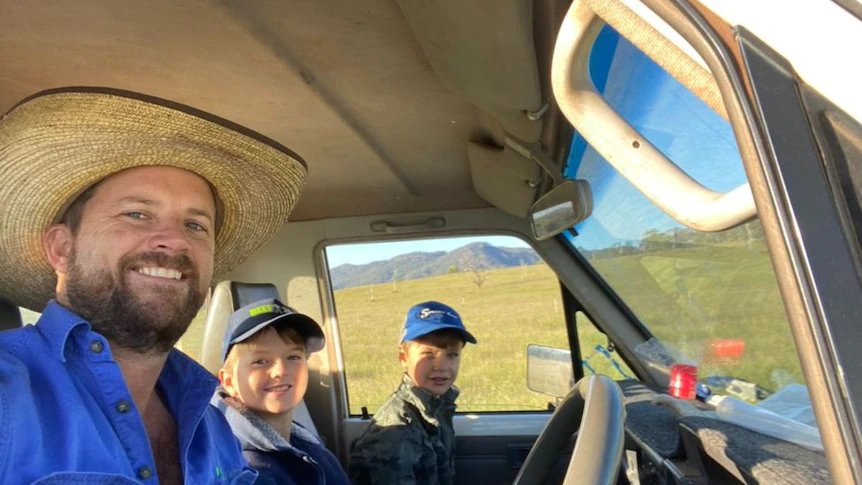[ad_1]
Houses aren’t the only renovator’s delights on the real estate market. So, too, are some farms.
Key points:
- A young Queensland couple has transformed a failed timber plantation into a thriving cattle property
- They worked on cattle stations in the Kimberley to save money to afford a farm of their own
- Using regenerative agricultural methods, they store carbon and water in their soil
For a young Queensland couple, buying a rundown property was the only way they could achieve their dreams of being beef producers.
“We had to have a renovator’s delight because we couldn’t afford to buy something already up and going,” Jacynta Coffey said.
“We didn’t want to pay for someone else’s improvements,” said her husband, Adam Coffey.
To raise the money to buy their land, the Coffeys worked multiple jobs, managing cattle stations in the Kimberley while building up their own herd on leased land.
“If you look at where we came from financially, you have to bite off what you can chew, whether that’s agistment or leasing,” Mrs Coffey said.
Four years ago they sold all their cattle — bar a few favourites — and used the cash to buy a 2,500-hectare farm at Miriam Vale in Central Queensland.
“This place was pretty wild,” Mr Coffey said.
“We had 400 hectares of mismanaged trees.
“After inspecting the property, I rang Jac and said, ‘I reckon I found it’.”
There was a lot of work to do.
Dams leaked or had been ruined by floodwaters, and there were few water points or livestock fences. A dilapidated Queenslander cottage leaned alarmingly on its stilts.
“The neighbours said they kept waiting for the crash of the house falling over when there was a strong wind,” Mr Coffey said.
The couple and their two young boys lived in a caravan until the cottage was habitable.
Starting from the ground up
The dream of working for themselves has been challenging.
The first setback was the unforeseen cost of removing 400,000 plantation trees where they’d planned to graze cattle.
“With the amount of woody weed, some parts were just impenetrable. The cows could not get through there,” Mrs Coffey said.
“[The trees] were just a liability with no monetary value [and] there was no environmental value in that sterile hybrid monoculture, so they had to go,” her husband added.
With the trees gone and the house repaired, they started renovating their pasture, using a regenerative agricultural practice called multi-species planting.
Southern dairy farmers use it to build carbon in the soil but it is unusual to see in Central Queensland broadacre grazing operations.
The Coffeys consulted agronomist Ross Newman, who prescribed two seed mixes with more than a dozen species of forage crops, legumes and grasses.
These are sown into existing native pastures; one mix grows summer feed, the other winter.
“What we are trying to do here is bust up that summer dominant monoculture and get plants that grow all times of the year,” Mr Coffey said.
Creative thinking for precious water
Mr Newman said the more plants they grew, the more carbon would be added to the soil via the root systems, and as carbon levels rose, so would water-holding capacity.
He said the range of plants created a nutrition-rich methane-reducing “salad bowl” of forage for cattle, while improving the soil.
“In Central Queensland, if we get a rainfall event it’s 100 to 300 millimetres in the space of two to six hours, and the whole game of beef production is to capture as much moisture as we can,” he said.
The couple said they were using soil as a bank to regularly deposit carbon and water, so they could intensify their grazing operation without causing environmental damage.
Although unusual, Mr Newman said the response after recent rain showed they were on the right track.
“It was a rundown, failed tree plantation,” he said.
“They were trying to grow carbon and store it in timber, not very successfully, we are going to show we can do it in pasture instead.”
“We’ll double our carrying capacity here no problem at all and it’s really exciting to see what it will look like in a few years time,” Mrs Coffey said.
Watch this story on ABC TV’s Landline at 12:30pm on Sunday, or on iview.

